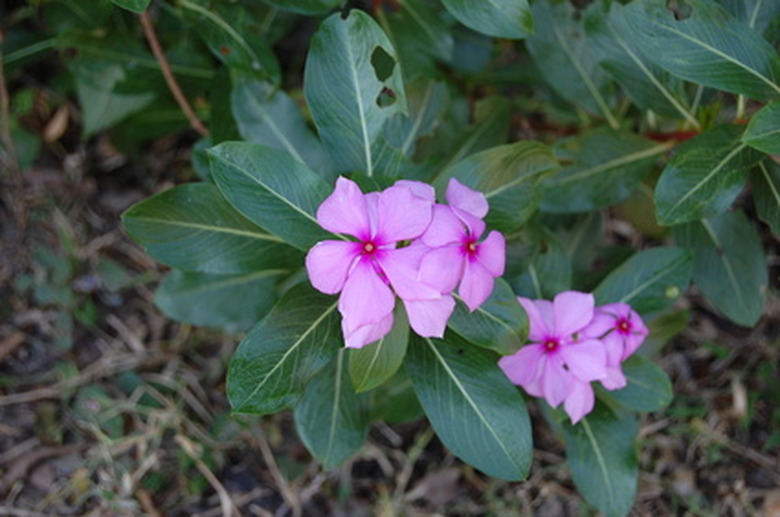Uses Of Vinca Rosea
With the botanical name Catharanthus roseus, vinca rosea is also commonly called Madagascar periwinkle, rose periwinkle and cape periwinkle. Native to southeastern and eastern Madagascar, vinca rosea actually prefers poor, unfertile soil. Propagated as both an annual and perennial, vinca rosea has a glossy, deep green, oval leaf and blooms with long-lasting, five-petal pink, lilac or white flowers.
Garden and Landscaping
The long-lasting blossoms of vinca rosea make it popular as a ground cover or garden border as well as in plantings for containers and hanging baskets. Some gardeners use it for naturalizing landscapes. It attracts both butterflies and bees. Depending upon the variety, vinca rosea grows to the width and depth of 7 to 24 inches, offering plenty of options for your garden and landscape design. Some varieties even do well as blooming houseplants.
- With the botanical name Catharanthus roseus, vinca rosea is also commonly called Madagascar periwinkle, rose periwinkle and cape periwinkle.
- The long-lasting blossoms of vinca rosea make it popular as a ground cover or garden border as well as in plantings for containers and hanging baskets.
Herbal Remedies
As an herb, Catharanthus roseus is well known around the world according to the National Tropical Botanical Garden. In India, the juice from its leaves is used to treat wasp stings. In parts of Central America, it is made into a gargle for sore throats. In Cuba, Puerto Rico and Jamaica, the flower is used to make an extract for infant formula eyewash. Periwinkle tea has been used to treat diabetes in Europe and as a cough medicine in China. Its success as an antidiabetic in Jamaica led scientists to explore applications for vinca rosea in traditional medicine during the 1950s.
Traditional Medicine
Over 70 different alkaloids, including vincristine and vinblastine, have been extracted from vinca rosea with astonishing results. The National Cancer Institute defines vinca alkaloid as "a type of drug that blocks cell growth by stopping mitosis (cell division). Vinca alkaloids interfere with microtubules (cell structures that help move chromosomes during mitosis). They are used to treat cancer." Vincristine, marketed as Oncovin, is used to treat leukemia in children. Vincristine and vinblastine combined with chemotherapy, according to the National Tropical Botanical Garden, have provided: 80 percent remission on Hodgkin's disease, 99 percent remission in acute lymphocytic leukemia, 80 percent remission is Wilm's tumors and 70 percent remission in gestational choriocarcinoma.
- As an herb, Catharanthus roseus is well known around the world according to the National Tropical Botanical Garden.
- In India, the juice from its leaves is used to treat wasp stings.
Spirituality and Folklore
As far back as medieval times, Catharanthus roseus has been used as a charm and for love potions. Garlands were once fashioned from the flowers to protect the wearer from evil spirits, according to Botanical.com, while the French came to see vinca rosea as an emblem of friendship. Today, many still believe in the spiritual power of vinca rosea.
